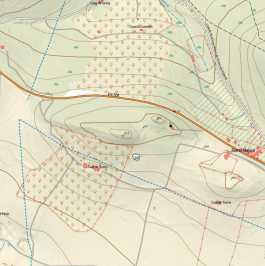Cranes in Extremadura
The sight and sound of common cranes are one of the most characteristic features of the dehesas and cultivated areas of Extremadura in winter. Between 120,000 and 130,000 visit the region. This map, produced in collaboration with Grus Extremadura, shows some of the best places to see wintering common cranes.
CÁCERES
Cranes in Extremadura
Extremadura is the main wintering area for Common Cranes in the Iberian Peninsula, hos�ng between 51-54% of the total popula�on
The first study of the species in the region (Pérez Chisconi & Fernández Cruz, 1971) had already shown the importance of this popula�on in Iberia, when it was highly dependent on the dehesas and cereal crops. The favourable climate, the presence of dehesas and safe roos�ng areas were key for this popula�on up to the mid-20th century. There wasthen alargetransforma�on infarming with theloss ofthousands of hectares of cereals and dehesas with conversion to irrigated crops and resultant changes in land use. This change, through �me, increased the area dedicated to maize and rice, which was beneficial to cranes, giving them opportuni�es to feed on the stubble fields, and changing the distribu�on ofthespecies intheregion.
The areas drama�cally transformed were the floodplains of the Guadiana River. The central area of the region lies at the boundary of the two provinces. As the area for tomatoes, rice and maize increased, so the cranes were able to find abundant food easily, with the dehesas s�ll offering foraging areas in the second half of winter. The acorns there offer a high calorie diet, which is important as prepara�on for the northward migra�on. Generally, December census counts show figuresthatarehigher intheirrigatedareas,with lowernumbersthere inJanuaryasbirdsmoveintothedehesas.
The cranes in Extremadura are distributed across the region and all of the nuclei are interconnected. Outlying areas are shared with adjacent regions such as Ciudad Real, Cordoba and Toledo, as well as Portugal. 65% of the Iberian cranes occur in the south-west of the peninsula, with numbers around 160,000, with Extremadura as the heart of this greatnucleus.
The importance of cranes in the region has given rise to various events linked to these birds, such as the annual Crane Fes�val, in the periurban park of Moheda Alta, in Navalvillar de Pela (Badajoz); Moraleja Vuela, in the place by the same name in the Sierra de Gata (Cáceres) and the Day of the Cranes, with a welcome to the cranes organized by ADENEX each year in different wintering sites in the region.
Distribu�on of Common Cranes in Extremadura
Borbollón Reservoir El Anillo (Gabriel and Galán Reservoir)
Los Mármoles (Valdecañas Reservoir) Garabatos Castle (Aldea del Cano)
Cubilar Reservoir
Los Canchales Reservoir
Alange – La Zarza road (EX - 105) Puerto Mejoral viewpoint
Belén Chapel (Cabeza del Buey)
Cuncos Reservoir















